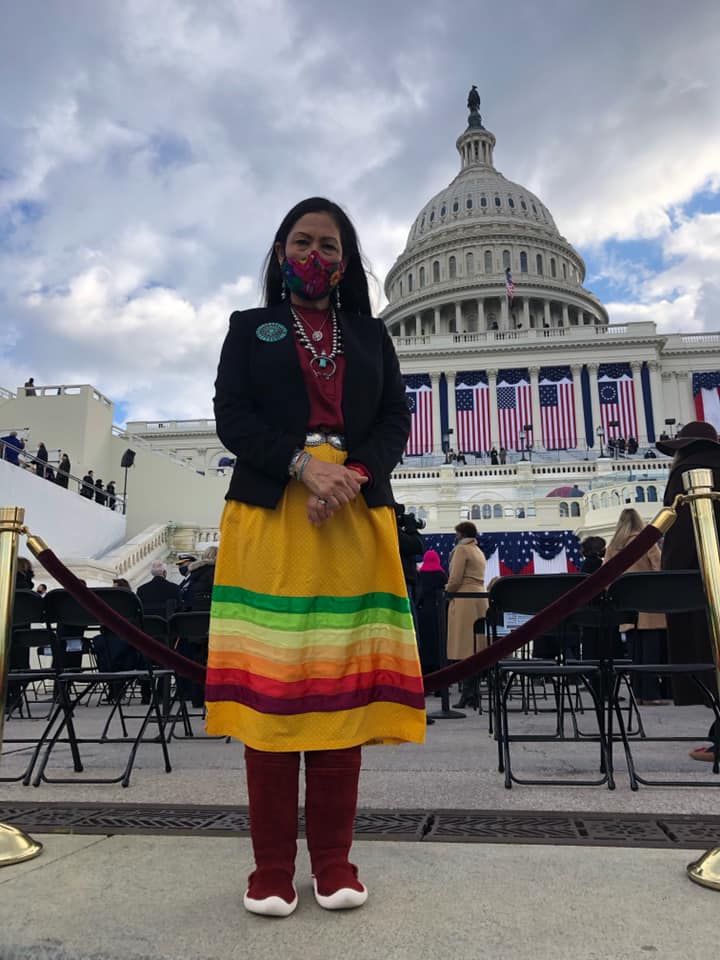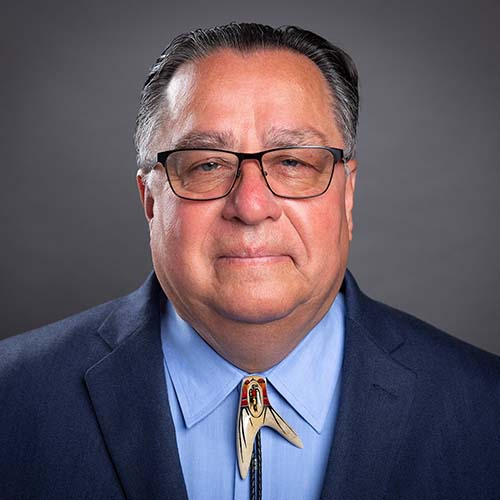
- Details
- By Levi Rickert
In the late 1990s, I testified before a joint legislative committee of the Michigan Legislature about the benefits of tribal gaming casinos on tribal citizens. Before I began, I introduced myself and noted I was a citizen of the Prairie Band Potawatomi Nation.
As I was leaving the witness table, I was called back by a state senator who asked me sternly if I considered myself an American citizen. Not wanting to engage in an argument, I answered “yes” and added, “The Internal Revenue Service does.” That answer garnered chuckles from a few American Indians sitting in the audience. The state senator’s face turned red as I took my seat in the audience.
Through the years, I have been asked following speaking engagements how American Indians could serve in the United States military at such higher rates than other demographics, after everything that has happened to American Indians throughout history.
It is a valid question. History has not been kind to our ancestors. American Indians were often greeted by settlers on a genocidal path across the continent. They carried the Holy Bible in one hand and a gun in the other. It is believed among American Indians that if they could not “save us,” they would kill us. American Indians have been the subject of many atrocities.
It is true American Indians have served in the U.S. military at higher rates than any other demographic in the country. A high percentage of American Indians volunteered in World War I before they became U.S. citizens in 1924. During the Vietnam War, 90 percent of American Indians who served volunteered. They were not drafted.
I generally answer the question saying American Indians have always been warriors and since the United States was the land of our ancestors, it is only natural they fight to protect land and freedom.
American Indians who are citizens of federally-recognized tribal nations enjoy duality as U.S. citizens. One fine example is Rep. Deb Haaland, a dual citizen of the United States and the Pueblo of Laguna. She has been nominated to be the next secretary of the Interior. When confirmed by the Senate, she will be the first American Indian to become part of a president’s cabinet in the history of the country. On Wednesday, Haaland arrived at the inauguration dressed in her cultural attire.
American Indians often fall somewhere between being traditionalists who fight colonization to being assimilated with little regard to their tribal identity. The citizenship identity may also shift with time.
Within my own progression as a Potawatomi man, the issue of duality as a tribal citizen and a U.S. citizen has caused me trepidation when examining who I am.
A few years ago when NFL football quarterback Colin Kaepernick took a knee during the national anthem to bring attention to police brutality against Black people, I understood. He was asking the nation to pay attention to the disproportionate brutality that Black people endure at the hands of law enforcement. According to the Centers for Disease Control and Prevention (CDC), American Indians and Alaska Natives have high rates of death by police.
It was Kaepernick’s right. It did not make him less of a patriot because he took a knee to protest injustice. I recalled times I chose not to stand for the national anthem because I was angry about the federal government’s treatment of American Indians. I felt standing would make me complicit and at that moment, I did not feel like standing. Other times, I stood because as a dual citizen I chose to stand. The back-and-forth speaks to conflicting feelings we have as humans, and as we progress along our personal journeys.
The deliberation of where I fit on the duality spectrum became more pronounced during the first three weeks of January as we witnessed an insurrection, an impeachment and an inauguration.
The U.S. citizen in me was angry at the insurrection. Seeing so-called patriots beat police officers with wooden U.S. flag poles sickened me. I thought this should never happen in the United States.
The inauguration seemed to restore order in United States governance. And 22-year-old Amanda Gorman’s poem “The Hill We Climb,” brought a wounded nation hope.
Her words "Somehow, we've weathered and witnessed a nation that isn’t broken but simply unfinished” were refreshing and perhaps more charitable than what I would have come up with. However, she gave us hope that we can work towards a more perfect union.
Later in the week, I read the words of one of my favorite Indigenous leaders, the great Onondaga Chief Oren Lyons. They summed up my thoughts on my own citizenship duality in its current state:
“Even though you and I are in different boats, you in your boat and we in our canoe, we share the same river of life. What befalls me befalls you. And downstream, downstream in this river of life, our children will pay for our selfishness, for our greed, and for our lack of vision.”
More Stories Like This
The Lie We Keep Telling About Wounded KneeAnother Weapon of Mass Destruction
Colorado cannot heal until it confronts Sand Creek honestly
Native American Mothers Deserve to Live
Technology Rooted in Tradition is Strengthening Cherokee Nation
Help us defend tribal sovereignty.
At Native News Online, our mission is rooted in telling the stories that strengthen sovereignty and uplift Indigenous voices — not just at year’s end, but every single day.
Because of your generosity last year, we were able to keep our reporters on the ground in tribal communities, at national gatherings and in the halls of Congress — covering the issues that matter most to Indian Country: sovereignty, culture, education, health and economic opportunity.
That support sustained us through a tough year in 2025. Now, as we look to the year ahead, we need your help right now to ensure warrior journalism remains strong — reporting that defends tribal sovereignty, amplifies Native truth, and holds power accountable.
 The stakes couldn't be higher. Your support keeps Native voices heard, Native stories told and Native sovereignty defended.
The stakes couldn't be higher. Your support keeps Native voices heard, Native stories told and Native sovereignty defended.
Stand with Warrior Journalism today.
Levi Rickert (Potawatomi), Editor & Publisher

